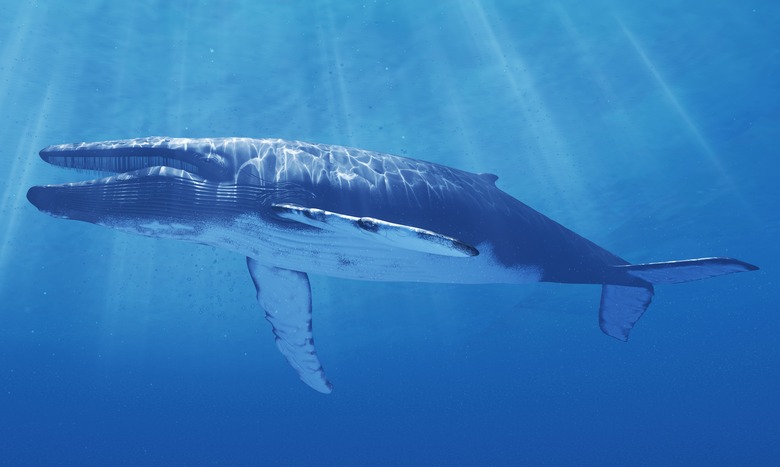The Reason Blue Whales Aren't Even Bigger? Their Hearts
Stanford researchers recently measured a wild blue whale's heart rate for the very first time, according to a study published Nov. 25 in the journal Proceedings of the National Academy of Sciences of the United States of America. This research reported that the mammal sustains a heart rates as high as 37 beats per minute near the ocean's surface, which drops as low as two beats per minute when the whale dive.
What's the Significance?
What's the Significance?
Blue whales represent the largest animal on Earth, and according to reporting from the New York Times, they might just be the largest animal that could possibly have a circulatory system. A blue whale's heart alone is about the size of a dunk tank.
With a heart rate ranging from two to 37 beats per minute, the blue whale is "an animal frequently pushing its own limits," Cara Giaimo wrote in the New York Times. These whales can reach 110 feet in length and dive as deep as 1,600 feet – for which reasons scientists had never measured their heart rates in the wild before.
How They Did It
How They Did It
The researchers used a lunchbox-sized device containing a collection of electronic sensors to measure the heart rate of a blue whale in the Monterey Bay. The device used four suction cups to attach to an area near the whale's left flipper, according to a press release from Stanford University.
Jeremy Goldbogen, assistant professor of biology at Stanford's school of humanities sciences, worked as lead author for the research report.
"We had no idea that this would work and we were skeptical even when we saw the initial data," Goldbogen said in the press release. "With a very keen eye, Paul Ponganis – our collaborator from the Scripps Institution of Oceanography – found the first heart beats in the data."
"There were a lot of high fives and victory laps around the lab," he added.
What the Heart Rate Means
What the Heart Rate Means
As Giaimo stated in the New York Times, the data gleaned from Goldbogen's project suggests that blue whales' circulatory systems are already pushing their limits. The Stanford press release stated that if blue whales' hearts are already working at their limits, that may explain why the whales never evolved to be larger.
"Animals that are operating at physiological extremes can help us understand biological limits to size," Goldbogen said in the release. "They may also be particularly susceptible to changes in their environment that could affect their food supply. Therefore, these studies may have important implications for the conservation and management of endangered species like blue whales."
Cite This Article
MLA
Swanston, Brenna. "The Reason Blue Whales Aren't Even Bigger? Their Hearts" sciencing.com, https://www.sciencing.com/blue-whale-heart-rate-13723473/. 9 December 2019.
APA
Swanston, Brenna. (2019, December 9). The Reason Blue Whales Aren't Even Bigger? Their Hearts. sciencing.com. Retrieved from https://www.sciencing.com/blue-whale-heart-rate-13723473/
Chicago
Swanston, Brenna. The Reason Blue Whales Aren't Even Bigger? Their Hearts last modified March 24, 2022. https://www.sciencing.com/blue-whale-heart-rate-13723473/
